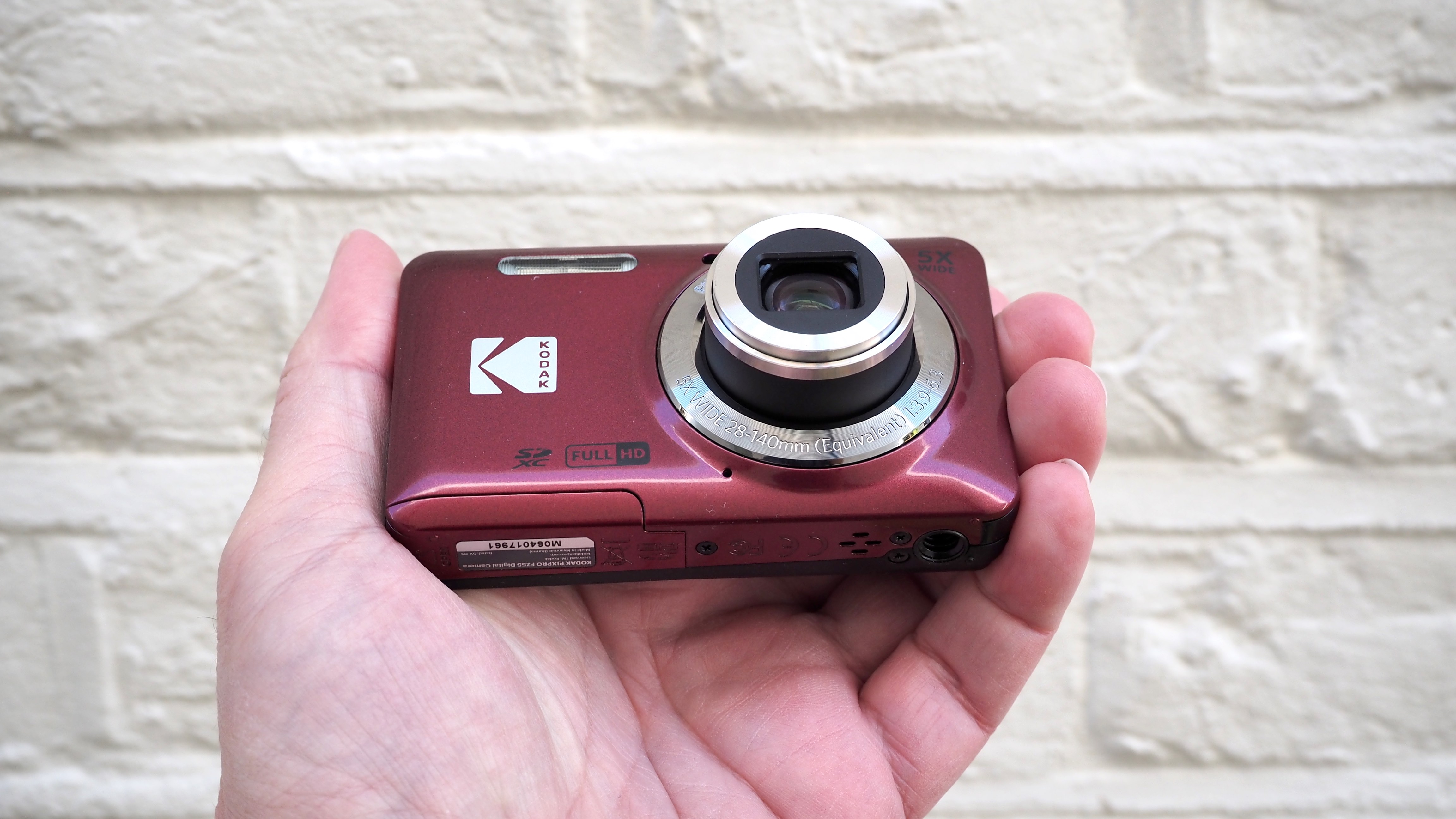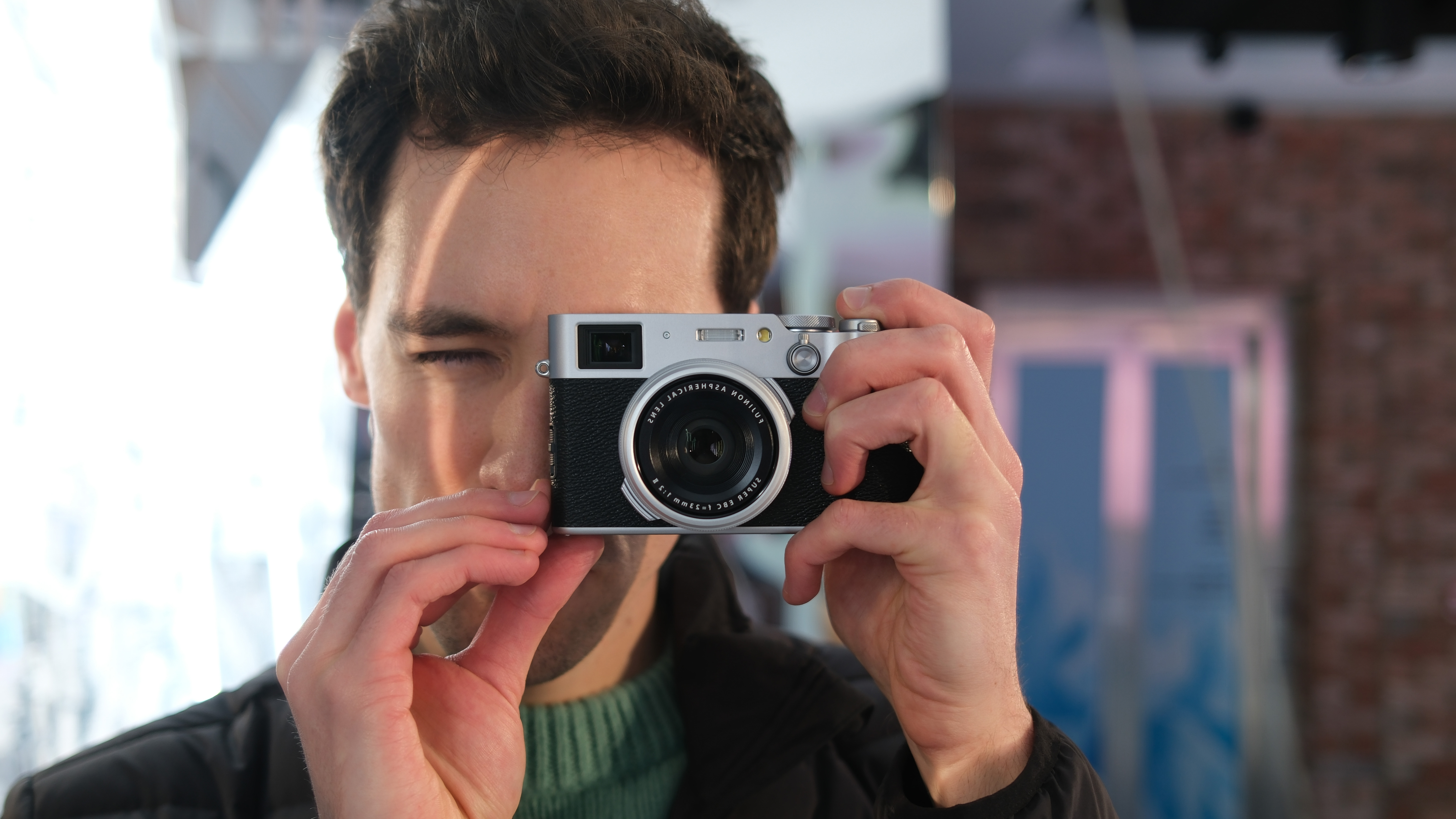I’m a millennial and I’d buy a Kodak Pixpro FZ55… have I just made it uncool?
Gen Z is breathing new life into the ‘redundant’, cheap compact camera – and I think we could learn a thing or two from these young photographers

Ah, the age-old passing of the generational torch. One minute I was slipping into a pair of skinny jeans, rocking a slick-looking side part, and texting my ‘BFF’ a smiling emoticon… and the next minute I’m squeezing into a pair of skinny jeans, using my side part to cover my receding hairline and wondering why my younger work colleague has replied to me in our WhatsApp group with an emoji of a skull.
No matter. If there’s one area of my life where I have my finger firmly on the pulse, it’s photography. Oh, what’s that? Gen Z is buying up the Kodak Pixpro FZ55 and Kodak Pixpro FZ45 and resurrecting the compact camera?
“Okay, boomer,” indeed.
What's Gen Z's deal with cheap compact cameras?

Call me a snowflake or Millennial; my generation has witnessed some of the information age’s biggest technological advancements. Long before AI’s coming of age, there was the birth of the internet, the emergence of social media, the invention of the smartphone and, of course, the brutal death of the compact camera.
Throughout much of the Noughties, almost everybody owned a cheap compact: a simple, pocketable device with a tiny sensor and a fixed lens. These little cameras were never imaging powerhouses, but they could be slipped into a back pocket or handbag and used to capture memories.
Then, Apple released the iPhone.
When Steve Jobs delivered his now legendary keynote speech at Macworld 2007, he initially told the audience that Apple was launching three products: “an iPod – a phone – and an internet communicator.” The big reveal was that the iPhone was all three. But he could have told people Apple was launching four products, because the iPhone also featured a camera.
Get the Digital Camera World Newsletter
The best camera deals, reviews, product advice, and unmissable photography news, direct to your inbox!
And yet, the original iPhone didn’t have a cutting-edge camera. Other camera phones of the day bettered it. But I think it’s safe to say that the iPhone and its subsequent incarnations played a huge role in what would become the swift and merciless demise of the compact camera.

So why, then, are Gen Zers clamoring to get their hands on compact cameras? The rise and rise of Fujifilm’s X100VI and the X100 series in general has been well documented. Despite being a bit pricey, it’s not hard to fathom the appeal of the X100VI. Fujifilm’s poster child is a fantastic little camera; it’s powerful, stylish and a heck of a lot of fun to use.
It’s everything the Kodak Pixpro FZ55 and FZ45 are not.
To explain why I think the FZ55 and its counterparts are having a moment, allow me to draw a few parallels with a device that the smartphone also killed: the watch. Specifically, the Casio F-91W.
This little device is as simple as it gets and can be picked up for way less than 20 bucks. It’s got its own classic charm, sure, but it’s not exactly the prettiest-looking watch out there. The light that’s supposed to illuminate the digital display is legendary for being absolutely useless. And while it’s a sturdy little watch, it’s prone to scratches and dings.
But here’s the thing: it has an accolade that the likes of Rolex, Omega, Tag Heuer and even Swatch will likely never surpass – the Casio F-91W is the biggest-selling watch of all time. Why? Because it’s so cheap that if you lose or break one, you can simply buy another – and it darn well tells the time.
Compare that to the Kodak FZ55. It’s so cheap that if you lose or break one, you can simply pick up another – and it darn well takes photos.
I’ve heard some argue that the average smartphone takes better photos than Kodak’s Pixpro lineup. But there’s an awful lot to be said for capturing photos with a dedicated camera. I really enjoy smartphone photography and I think it’s a great place for people to start their photography journey. But the biggest advantage of using a dedicated camera is that it forces you to be present.
The Kodak FZ55 doesn’t ping to tell you you've received a notification. A security update won't pop up mid-shoot. And it doesn't present you with a delectable dish of dopamine that’ll tempt you into a doom-scrolling session as you wait for the sun to set.
You can’t take your best photography if you’re distracted. So believe me when I say Gen Zers have got it right; if it’s been years since you owned a dedicated camera, try picking up a cheap FZ55 (or the like). Pop your phone away in your rucksack and you might just capture your best photos ever.
You may also like...
If you're looking for your first dedicated camera, check out the best camera for beginners. If you're looking to pick up a compact camera to complement existing cameras, you might be interested in the best APS-C compact cameras. And if you can possibly bear reading another one of my opinion articles, find out why the Nikon Df is the DSLR I'd buy today.

Mike is Digital Camera World's How To Editor. He has over a decade of experience, writing for some of the biggest specialist publications including Digital Camera, Digital Photographer and PhotoPlus: The Canon Magazine. Prior to DCW, Mike was Deputy Editor of N-Photo: The Nikon Magazine and Production Editor at Wex Photo Video, where he sharpened his skills in both the stills and videography spheres. While he's an avid motorsport photographer, his skills extend to every genre of photography – making him one of Digital Camera World's top tutors for techniques on cameras, lenses, tripods, filters and other imaging equipment – as well as sharing his expertise on shooting everything from portraits and landscapes to abstracts and architecture to wildlife and, yes, fast things going around race tracks...
